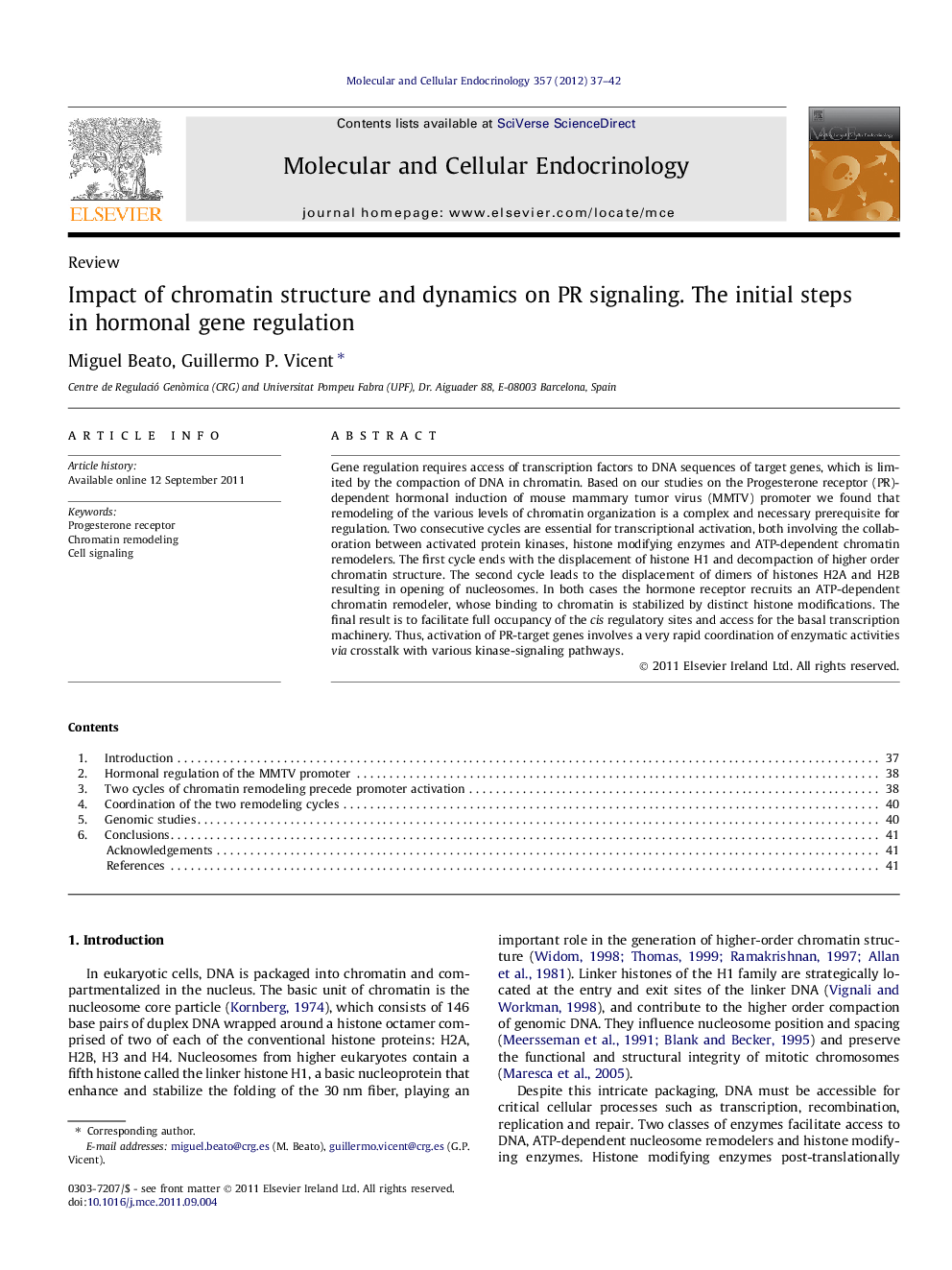| Article ID | Journal | Published Year | Pages | File Type |
|---|---|---|---|---|
| 2196324 | Molecular and Cellular Endocrinology | 2012 | 6 Pages |
Gene regulation requires access of transcription factors to DNA sequences of target genes, which is limited by the compaction of DNA in chromatin. Based on our studies on the Progesterone receptor (PR)-dependent hormonal induction of mouse mammary tumor virus (MMTV) promoter we found that remodeling of the various levels of chromatin organization is a complex and necessary prerequisite for regulation. Two consecutive cycles are essential for transcriptional activation, both involving the collaboration between activated protein kinases, histone modifying enzymes and ATP-dependent chromatin remodelers. The first cycle ends with the displacement of histone H1 and decompaction of higher order chromatin structure. The second cycle leads to the displacement of dimers of histones H2A and H2B resulting in opening of nucleosomes. In both cases the hormone receptor recruits an ATP-dependent chromatin remodeler, whose binding to chromatin is stabilized by distinct histone modifications. The final result is to facilitate full occupancy of the cis regulatory sites and access for the basal transcription machinery. Thus, activation of PR-target genes involves a very rapid coordination of enzymatic activities via crosstalk with various kinase-signaling pathways.
► Chromatin remodeling is a complex and necessary prerequisite for gene regulation. ► Substantial enzymatic complexity is required for the “displacement” of linker histone H1. ► Cooperation between kinases, ATP and non-ATP chromatin remodelers is critical. ► Remodeling facilitates occupancy of regulatory sites and transcription machinery. ► Genomic and non-genomic actions converge in the modification of chromatin components.
